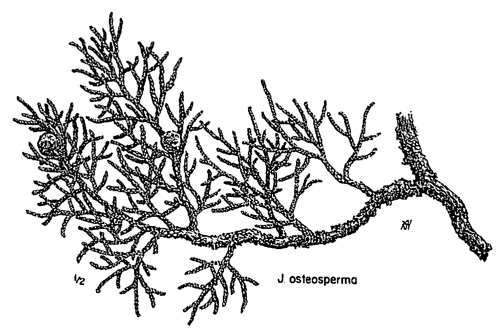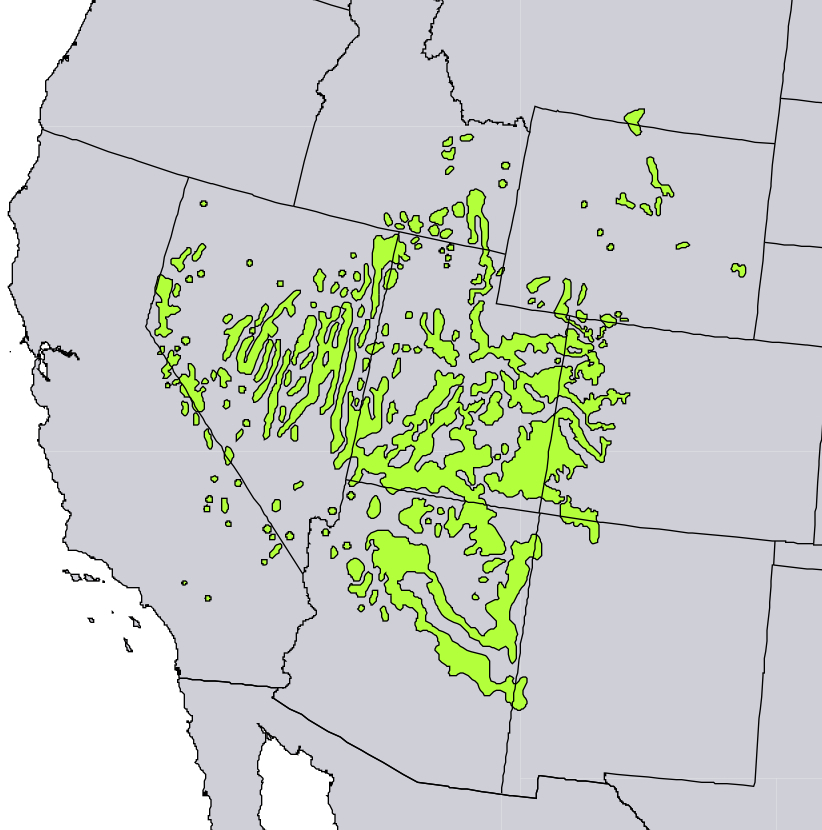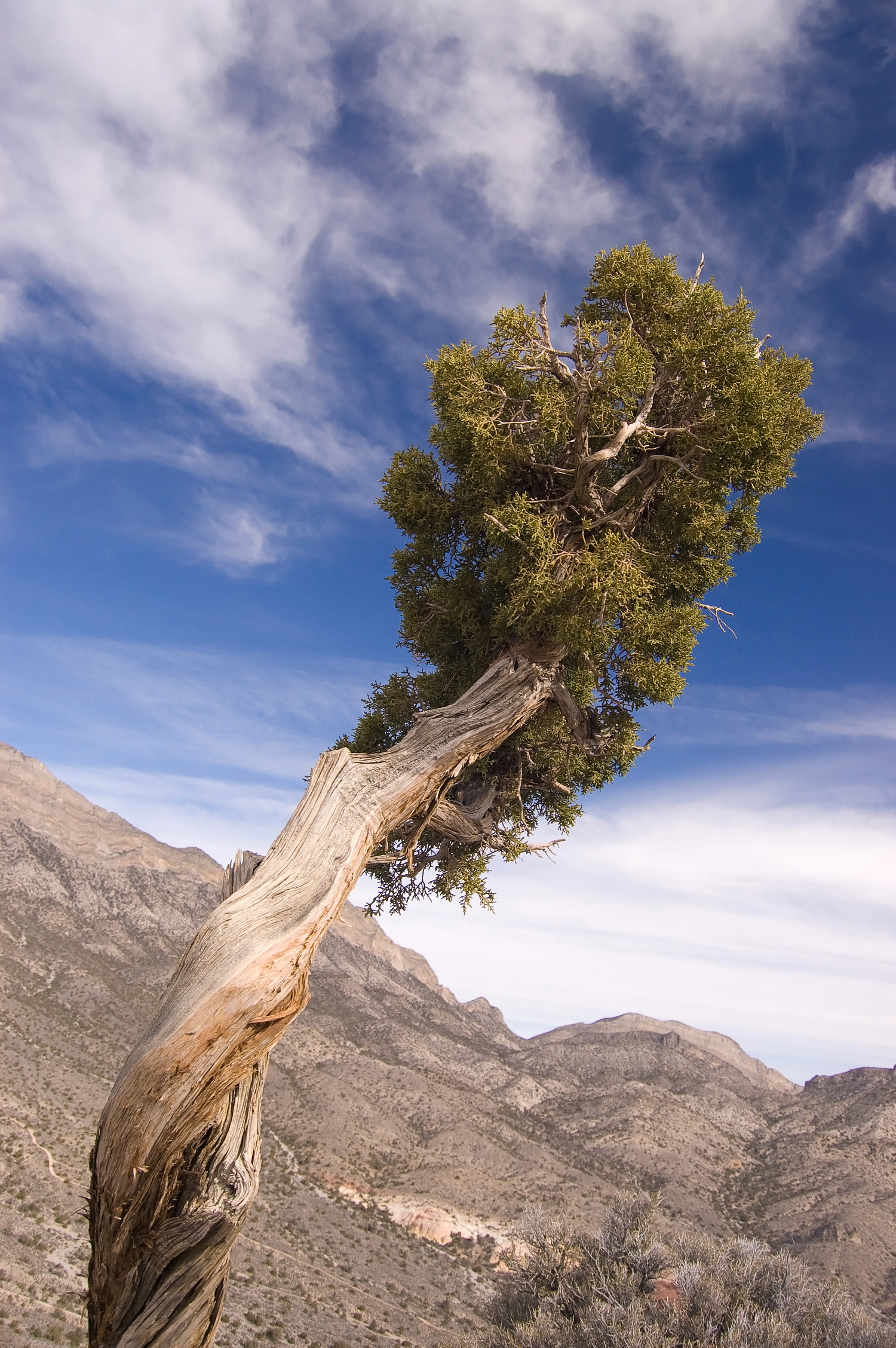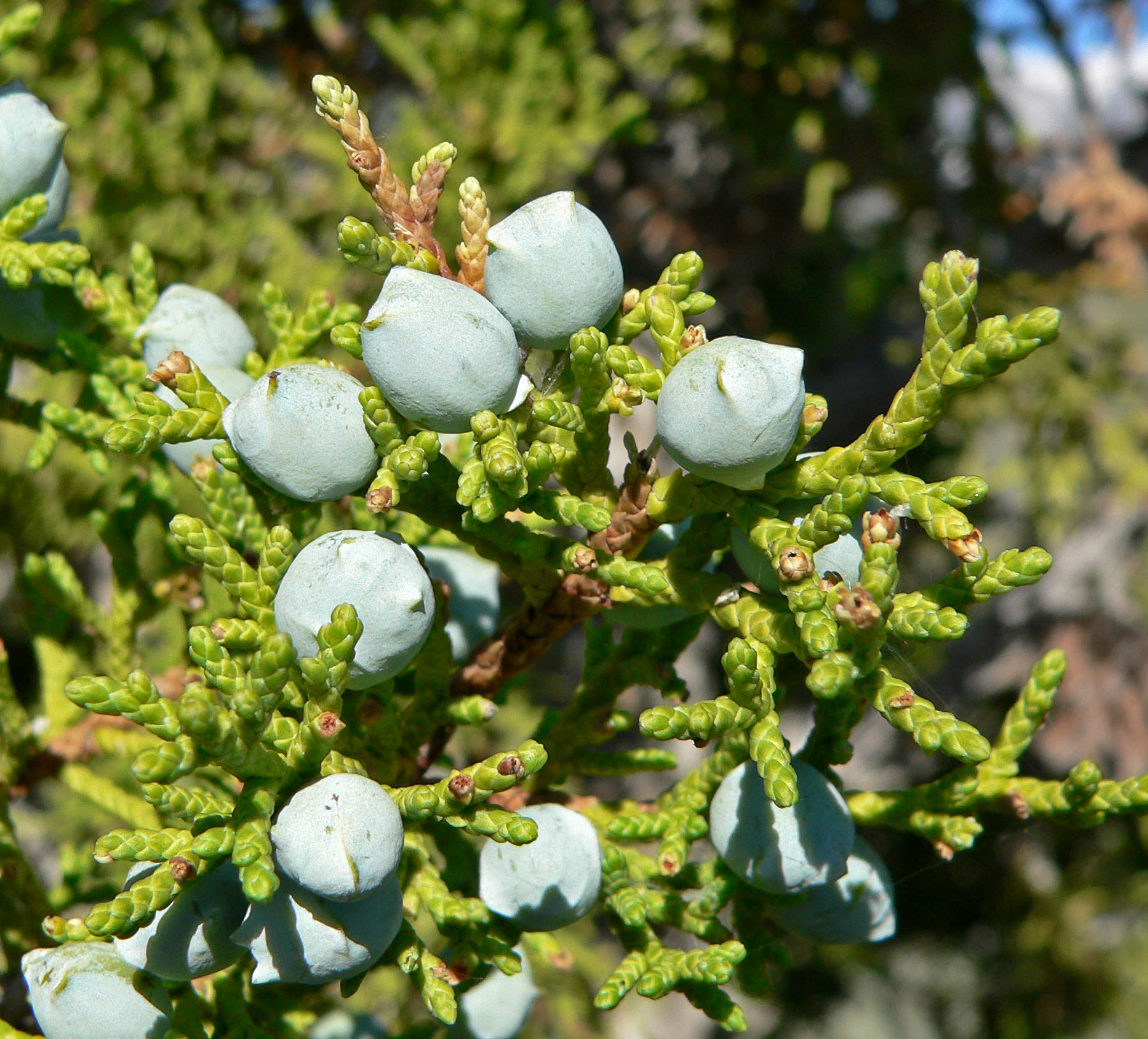
Juniperus osteosperma as described by in 1948 by (Torrey) Elbert Luther Little (1907-2004), in Leaflets of Western Botany, vol.5, is commonly known as Utah juniper; synonymous with .J. utahensis. Other common names include desert cedar, as well as sabina, cedro, and sabina morena in the Spanish language. The species name translates into "bone-seed" from the Latin language, referring to its exceptionally hard seeds.

Distribution. This species is native to southwestern United States, in Utah, Nevada, Arizona, western New Mexico, western Colorado, Wyoming, southern Montana, southern Idaho and eastern California. It grows at moderate elevations of 4,100 to 8,200 feet (1,300 - 2,600 m) above sea level, on dry soils, often associated with single-leaf pinyon pine (Pinus monophylla).
Cold hardy to USDA Zone 6 (0 to -10ºF / -17.8 to -23.3ºC)
The plants frequently bear numerous galls caused by the juniper tip midge Oligotrophus betheli (Bibionomorpha: Cecidomyiidae); these are conspicuous pale violet-purple, produced in clusters of 5 to 20 together, each gall 0.4 to 0.8 inch (1 - 2 cm) diameter, with dense, modified spreading scale-leaves 0.24 to 0.4 inch (6 - 10 mm) long and 0.08 to 0.12 inch (2 - 3 mm) broad at the base. Seeds are dispersed by jackrabbits, mostly the black-tailed jackrabbit (Lepus californicus spp.), rodents and to a lesser extent by coyotes (Canis latrans).

